Alcohol and Anxiety: Dangers of Stressful Withdrawal Symptoms
If you’re frequently getting panic attacks after consuming alcohol, it’s important to take a step back and look at your drinking. If you’ve been unable to stop, despite the regular panic attacks that alcohol has caused, it’s recommended that you seek professional help to deal with the issue. Drinking is commonly used to numb anxious thoughts, and yet paradoxically alcohol can cause more panic attacks to occur. Alcohol is a drug like any other, and anything that affects your body like alcohol does has the potential to contribute a great deal to your panic attacks and anxiety more generally. For this reason, those that have panic attacks should strongly consider avoiding alcohol wherever possible. Another way that depression could lead someone to drink alcohol is through changes in their brain as a result of depression.
- If a person drinks regularly, the natural GABA and serotonin levels can get destabilised, making withdrawal symptoms and anxiety attacks worse.
- There is a wide range of treatment options available that can help people deal with stress and panic attacks in a healthy, abuse-free way.
- These medications are not needed to help clear an alcohol-induced mood or depressive disorder.
- It takes your body and liver about eight hours to remove what’s essentially a poison.
- However, over time or in excess amounts, drinking alcohol can lead to increased levels of anxiety and stress.
- This is because ethanol suppresses those feelings while they are “high,” and when the dopamine levels go back to normal, the rebound effect is far greater than it would be for a person with no mental health disorder.
The efficacy of these drugs for anxiety treatment has been established firmly in well-controlled, randomized clinical trials. However, it is important to note that these studies typically exclude people with AUDs—a requisite standard practice to enhance the internal validity of efficacy studies. This exclusion means, however, that treatment providers must use clinical judgment when prescribing these medications to comorbid patients. Third, different comorbidity patterns exist among patient subgroups with different demographic characteristics such as race/ethnicity and gender. For example, in the NESARC, Native Americans had elevated rates both of anxiety disorders and of AUDs over the past 12 months but lower rates of co-occurrence between these disorders compared with other ethnic groups (Smith et al. 2006).
How Do You Cope With a Panic Attack?
Neither male nor female relatives showed increased risks for obsessive-compulsive disorder, social phobia, panic disorder, and/or agoraphobia. A preliminary evaluation of the lifetime rates of major depressive disorders in 2,409 interviewed relatives of alcoholics revealed a rate of 17.5 percent, a figure that was almost identical to the rate observed in control families. Standard delivery of RPT also may require a pivotal adaptation when applied to clients with comorbid anxiety disorders. RPT emphasizes the importance of identifying an individual’s unique risk factors (e.g., high-risk situations) for relapse and incorporates skill-development techniques to help reduce the likelihood of lapses and to manage them should they occur. It is widely understood in the RPT literature that negative emotional states are particularly perilous to recovery efforts.

However, several limitations of the parallel approach also exist beyond inherent difficulties with case coordination (Stewart and Conrod 2008). For example, clients may become overburdened with the time and effort involved with participation in two treatments with potentially two providers in separate locations. Thus, previous research has suggested can alcohol cause panic attacks that parallel psychosocial treatments for anxiety and AUDs may be too demanding for clients, which can negatively influence treatment outcomes (,Randall et al. 2001). In addition, the parallel approach may convey an implicit (and erroneous) suggestion that the two disorders are separate, and the approach generally may be inefficient.
Alcohol and anxiety: can booze trigger panic attacks?
In the short term, drinking alcohol can make you feel good, sociable, and even euphoric. There is a strong link between alcohol use and depression, a mental health condition that includes feelings of hopelessness, emptiness, fatigue, loss of interest, and more. But does regular drinking lead to depression, or are people with depression more likely to drink too much alcohol? If you’ve never had a panic attack before, then it is important to undergo a physical health exam to make sure that this is what is occurring.
- If you have a co-occurring mental health condition, you are more likely to experience frequent and intense panic attacks.
- You can learn more about naltrexone vs antabuse, and connect with a physician to discuss your specific needs.
- This has been demonstrated in a series of studies evaluating the intersection of gender, social anxiety disorder, and treatment modality.
- For example, a direct examination of the efficacy of paroxetine in this population showed that it reduced social anxiety relative to placebo (Book et al. 2008), providing an empirical foundation for its use in these patients.
It is also important to remember that some studies indicate a potential relationship between alcoholism and anxiety/ depressive disorders. In addition, alcoholism and these psychiatric disorders may operate together within some families, or individual instances may occur whereby a person develops alcoholism as a direct reflection of a preexisting psychiatric syndrome. It is, therefore, not surprising that more than one out of every three alcoholics has experienced episodes of intense depression and/or severe anxiety (Cox et al. 1990; Wilson 1988). These psychological conditions are often intense enough to interfere with life functioning, and the symptoms are often recognized by physicians and other health care providers as serious enough to require treatment. When depressed or anxious alcohol-dependent people are asked their opinions about cause and effect, they often reply that they believe they drink in order to cope with their symptoms of sadness or nervousness.
Can You Treat Anxiety and Alcohol Use Disorders at the Same Time?
That’s why drinking can help you feel relaxed in the short-term, especially in social situations. Additionally, alcohol affects neurotransmitter levels in the brain—the chemical messengers responsible for how we think, feel, and behave. Over time, these changes can make it harder for you to relax when you aren’t drinking and may lead to persistent worries, https://ecosoberhouse.com/ intrusive thoughts, and other anxiety symptoms. We turned to our staff of board-certified psychiatrists for everything you need to know about the connection between alcohol and anxiety, including when it’s time to seek help. It’s no secret that alcohol has a profound impact on the brain—even a casual drinker can experience a mood shift after a beer or two.
Trying to quit alcohol on your own can sometimes lead to developing uncomfortable withdrawal symptoms that impact your physical and mental health. Long-term alcohol abuse can not only induce panic attacks but can also lead to PTSD. This becomes even more true if a person has an anxiety or panic disorder. Alcohol not only contributes to anxiety but rewires the part of the brain responsible for coping with fear. Because of this, a person will hold on to fear-inducing associations longer and will have a harder time recovering from trauma. It is true that alcohol can help with anxiety, at least temporarily, but it can also make it worse in the long run and cause serious panic attacks.




